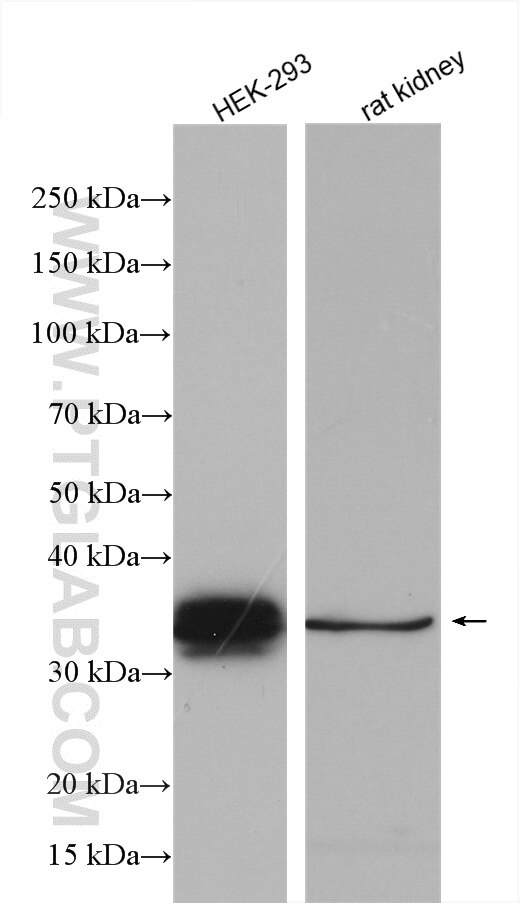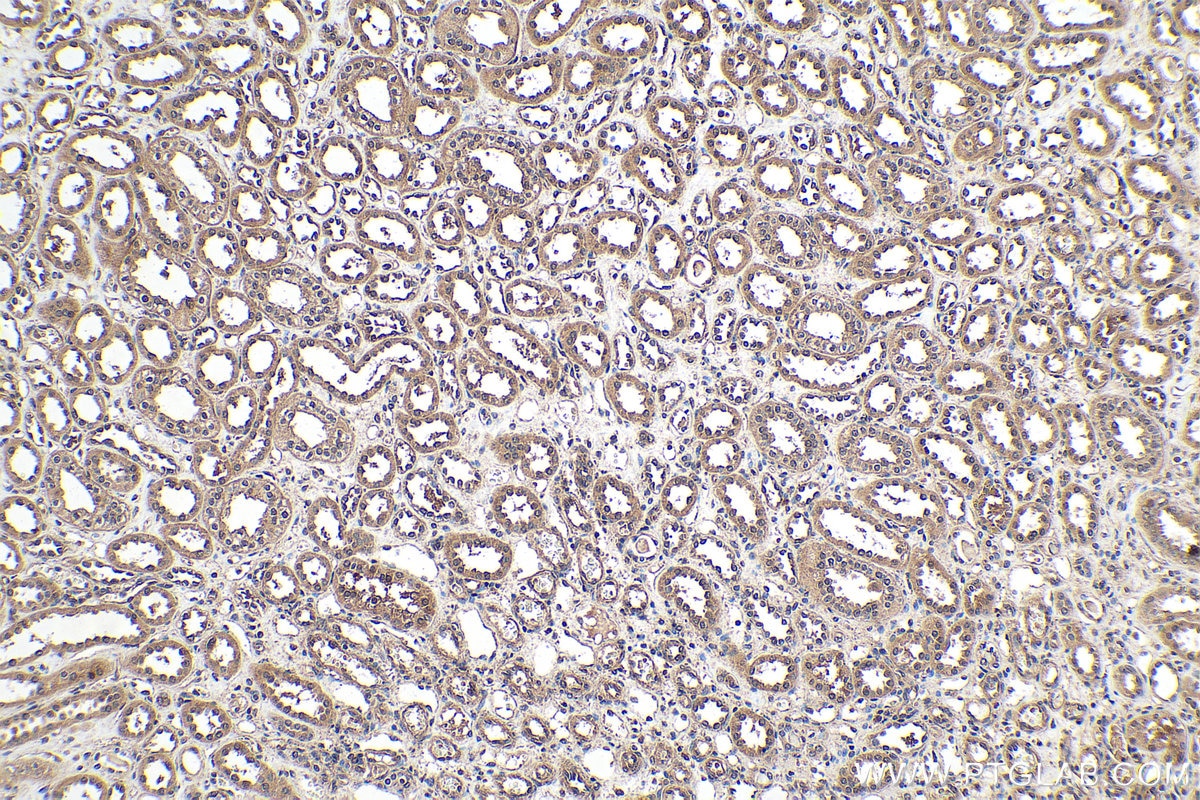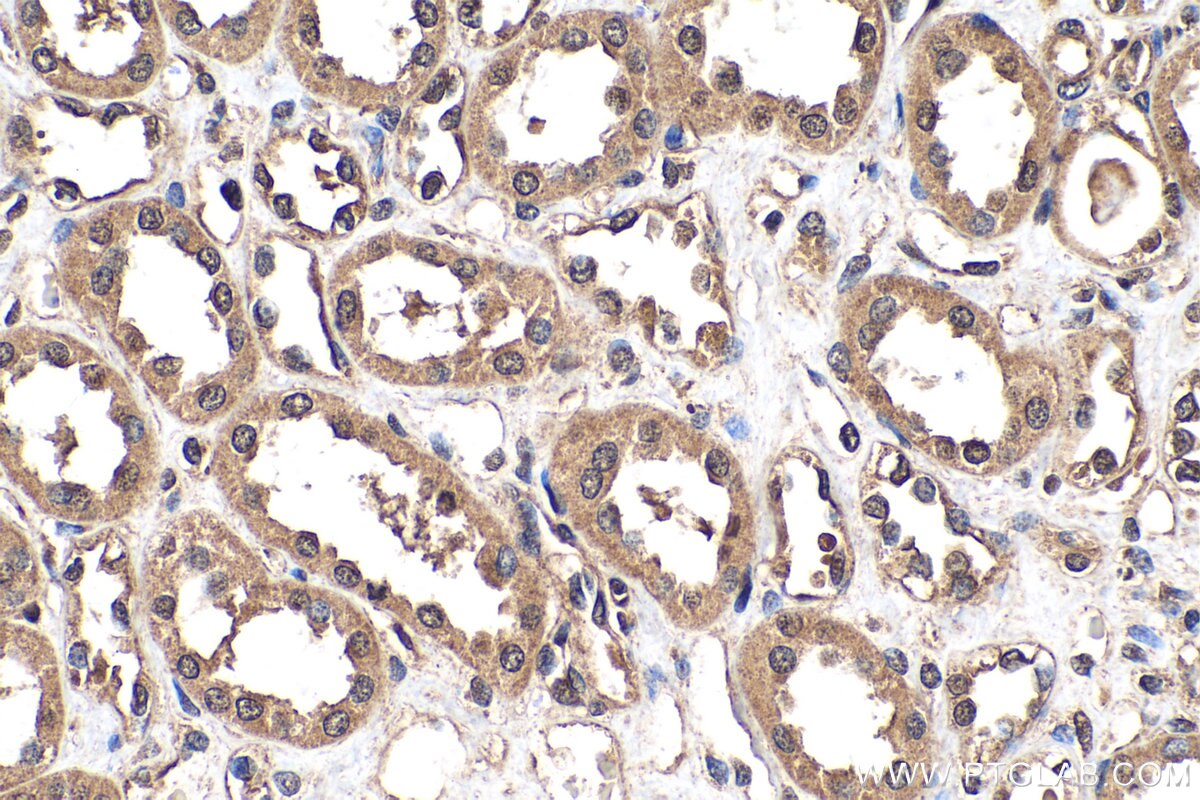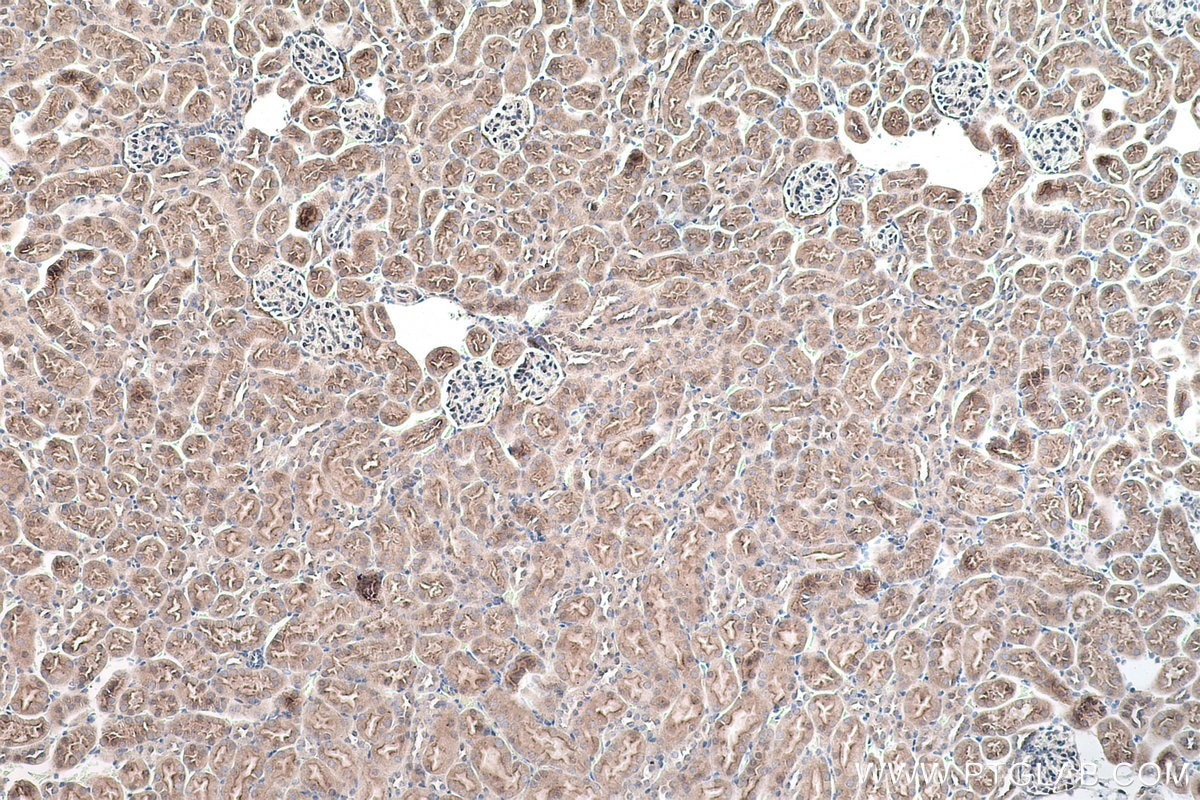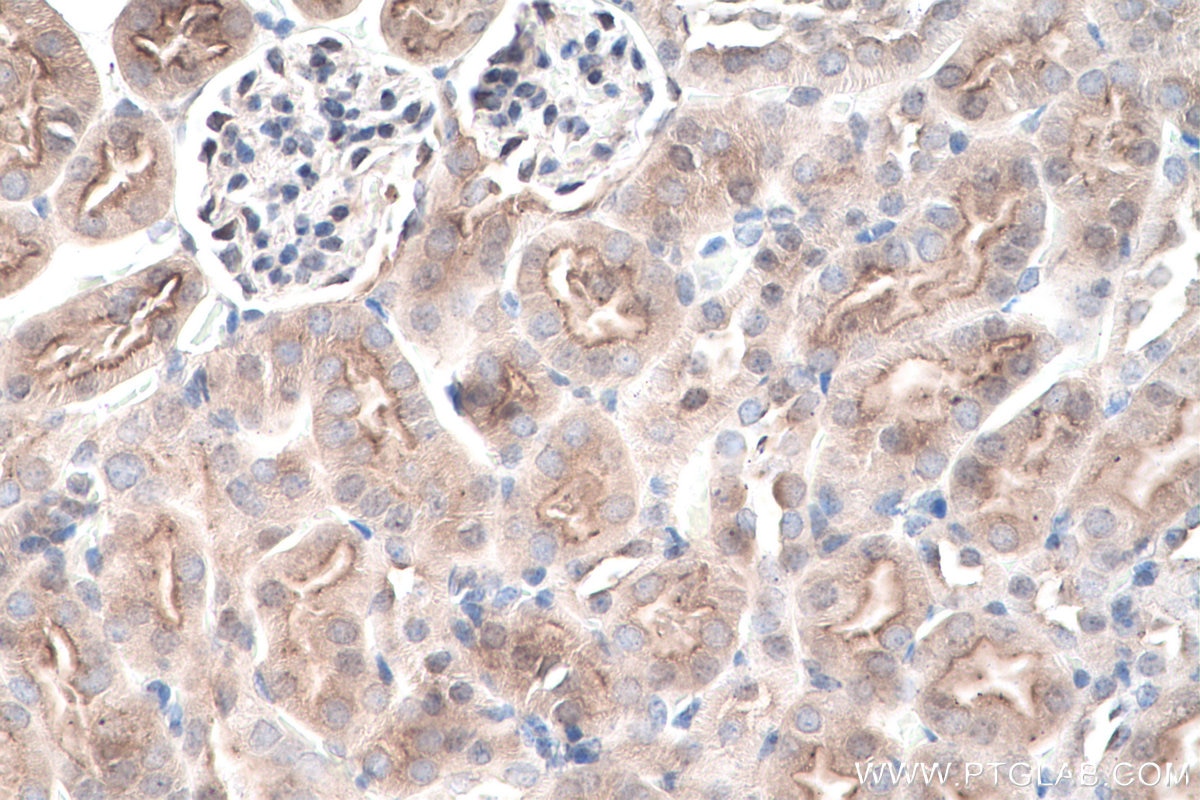- Featured Product
- KD/KO Validated
Ephrin B1 Polyklonaler Antikörper
Ephrin B1 Polyklonal Antikörper für WB, IHC, ELISA
Wirt / Isotyp
Kaninchen / IgG
Getestete Reaktivität
human, Maus, Ratte
Anwendung
WB, IHC, IF, ELISA
Konjugation
Unkonjugiert
Kat-Nr. : 12999-1-AP
Synonyme
Geprüfte Anwendungen
| Erfolgreiche Detektion in WB | HEK-293-Zellen, Rattennierengewebe |
| Erfolgreiche Detektion in IHC | humanes Nierengewebe, Mausnierengewebe Hinweis: Antigendemaskierung mit TE-Puffer pH 9,0 empfohlen. (*) Wahlweise kann die Antigendemaskierung auch mit Citratpuffer pH 6,0 erfolgen. |
Empfohlene Verdünnung
| Anwendung | Verdünnung |
|---|---|
| Western Blot (WB) | WB : 1:500-1:2000 |
| Immunhistochemie (IHC) | IHC : 1:1000-1:4000 |
| It is recommended that this reagent should be titrated in each testing system to obtain optimal results. | |
| Sample-dependent, check data in validation data gallery | |
Veröffentlichte Anwendungen
| KD/KO | See 1 publications below |
| WB | See 2 publications below |
| IHC | See 1 publications below |
| IF | See 1 publications below |
Produktinformation
12999-1-AP bindet in WB, IHC, IF, ELISA Ephrin B1 und zeigt Reaktivität mit human, Maus, Ratten
| Getestete Reaktivität | human, Maus, Ratte |
| In Publikationen genannte Reaktivität | human, Maus, Ratte |
| Wirt / Isotyp | Kaninchen / IgG |
| Klonalität | Polyklonal |
| Typ | Antikörper |
| Immunogen | Ephrin B1 fusion protein Ag3669 |
| Vollständiger Name | ephrin-B1 |
| Berechnetes Molekulargewicht | 346 aa, 38 kDa |
| Beobachtetes Molekulargewicht | 38 kDa |
| GenBank-Zugangsnummer | BC016649 |
| Gene symbol | Ephrin B1 |
| Gene ID (NCBI) | 1947 |
| Konjugation | Unkonjugiert |
| Form | Liquid |
| Reinigungsmethode | Antigen-Affinitätsreinigung |
| Lagerungspuffer | PBS with 0.02% sodium azide and 50% glycerol |
| Lagerungsbedingungen | Bei -20°C lagern. Nach dem Versand ein Jahr lang stabil Aliquotieren ist bei -20oC Lagerung nicht notwendig. 20ul Größen enthalten 0,1% BSA. |
Hintergrundinformationen
EFNB1 (Ephrin B1) is a member of the ephrin family, which are membrane-bound guidance cues that interact with Eph receptors, a family of receptor tyrosine kinases. EFNB1 is X-inactivated, and it has been proposed that in heterozygous females, patchy loss of ephrin B1 disturbs tissue boundary formation at the developing coronal suture (PMID: 34824583, 18627045). EFNB1 mainly plays a central part in cell adhesion, angiogenesis, and development of the nervous system (PMID: 30326247).
Protokolle
| PRODUKTSPEZIFISCHE PROTOKOLLE | |
|---|---|
| WB protocol for Ephrin B1 antibody 12999-1-AP | Protokoll herunterladen |
| IHC protocol for Ephrin B1 antibody 12999-1-AP | Protokoll herunterladenl |
| STANDARD-PROTOKOLLE | |
|---|---|
| Klicken Sie hier, um unsere Standardprotokolle anzuzeigen |
Publikationen
| Species | Application | Title |
|---|---|---|
Cell Stem Cell Non-canonical Targets of HIF1a Impair Oligodendrocyte Progenitor Cell Function. | ||
Signal Transduct Target Ther Aberrant epithelial cell interaction promotes esophageal squamous-cell carcinoma development and progression
| ||
